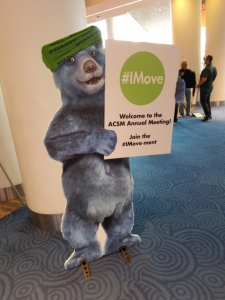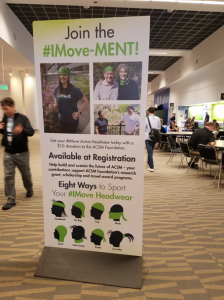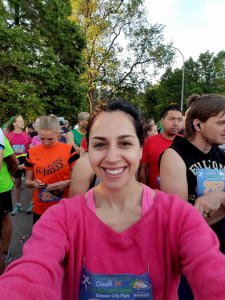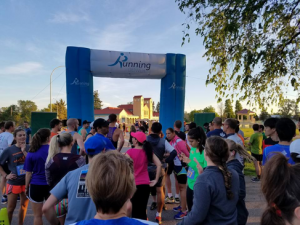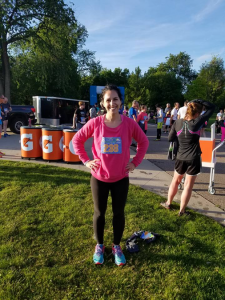Day 4 of the American College of Sports Medicine Conference – 2017

Join the #IMove-MENT
Julia Basso – PhD
ACSM/SBM Co-Sponsored Symposium: Exercise as an Integrative Approach to the Management of Chronic Pain and Addiction
Psychobiology of pain and exercise in chronic musculoskeletal pain (Dane Cook, University of Wisconsin)
In patients with chronic pain issues, exercise may exacerbate fatigue, pain, and cognitive impairment often seen in these patients. However, acute exercise is not always associated with a worsening of pain and fatigue. For example, moderate intensity exercise can strengthen pain modulatory function in patients with fibromyalgia; that is, exercise increases activity in brain regions that inhibit the pain that we feel. Chronic pain can actually be seen at the level of the brain. Compared to healthy Gulf War veterans, Gulf War veterans with chronic muscle pain show widespread reductions in white matter integrity, with these brain impairments being associated with the level of chronic pain symptoms. Physical activity level, however, have been shown to modulate this effect, with higher physical activity levels corresponding to better brain health.
Treating patient pain through exercise (Marie Hoeger Bement, Marquette University)
Abnormal pain modulation is a shared characteristic of many chronic pain patients. Exercise can be helpful in the treatment of chronic pain. In fact, the majority of review studies conclude that prolonged or chronic exercise results in pain relief. Many individuals with chronic pain do not engage in a regular physical activity programs, and some report that exercise increases their pain. This initial increase in pain, however, does not mean that chronic exercise won’t help with prolonged pain relief. Dr. Bement says, “Hurt does not equal harm. If you haven’t been exercising, it is natural that exercise may hurt.” This plays into the idea that pain inhibits pain. If exercise causes minimal levels of pain, the brain may engage pain modulatory circuits to inhibit the pain experienced by chronic pain patients.
CDC’s Vision for Increasing Physical Activity Across the Nation: Looking Behind the Curtain (Janet Fulton, Ruth Petersen, & Susan Carlson, Center for Disease Control)
Only 50% of adults in the United States meet the requirements for physical activity, and $117 billion in annual healthcare costs are associated with inadequate physical activity (Carlson et al., 2014). This is a serious issue, and the Center for Disease Control is making a call for action to get people more active. Their long-term goal is to increase the number of youth and adults who increase their level of physical activity. In their program, which they call “Active People, Healthy Nation”, they focus on 5 areas of development.
These are:
- To deliver physical activity programs that work;
- To mobilize physical activity partners;
- To message active lifestyles;
- To train leaders for action;
- To develop technologies, tools, and data that matter.
Highlight of the Day:
2017 ACSM Annual Meeting Gisolfi 5K Fun Run and Walk
Today I ran my first race ever as part of the 2017 American College of Sports Medicine conference – and I did it at 6 am and 5,280 feet (1 mile) above sea level!
You Might Like:

